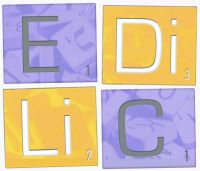Description
This paper examines the plurilingual pedagogical awareness and strategies of teaching staff at an Australian university with relation to teaching plurilingual students. Language is a domain that affects student participation and inclusion in education. However, in a country where almost a third of the population were born overseas and a fifth of the population speaks a language other than English at home, higher education is monolingual and is a language immersive environment. The need to engage with student plurilingualism has been identified by both students and academic staff. Both international students and academics stress the importance of representing more languages on campus and incorporating translanguaging practices (Dobinson et al., 2023). This can form part of increasing linguistic and cultural inclusivity both on campus and in higher education in general (Bodis, 2021b; Steele et al., 2024). Conversely, the focus on English language proficiency and the idea that plurilingual students, more specifically international students, should use English only are in stark contrast with the lived realities of these students (Piller, 2016; Yin et al., 2021). Indeed, their plurilingualism and skills and competencies available through their languages are ignored or seen as problematic (Bodis, 2021a).
This qualitative study explored the beliefs of university educators about student plurilingualism and the pedagogical practices employed. The data came from 65 questionnaire responses from 17 departments as well as interviews with 12 participants who took part in 35-45min long focus group discussions. Survey results show that the most common pedagogical practices that enable learning for linguistically diverse students are active learning strategies and assessment-related practices (peer assessment, glossary etc.). The interviews, however, revealed more strategies that respondents often had not been aware of or had not directly linked to plurilingual pedagogies. The findings of this study can lead to local staff training initiatives and inform larger-scale studies.
References
Bodis, A. (2021a). ‘Double deficit’ and exclusion: Mediated language ideologies and international students’ multilingualism. Multilingua, 40(3), 367-391. https://doi.org/https://doi.org/10.1515/multi-2019-0106
Bodis, A. (2021b). Multilingual students and monolingual universities: language ideological debates about international students in Australia [PhD thesis, Macquarie University].
Dobinson, T., Dryden, S., Dovchin, S., Gong, Q., & Mercieca, P. (2023). Translanguaging and “English Only” at Universities. TESOL Quarterly, 58(1), 307-333. https://doi.org/10.1002/tesq.3232
Piller, I. (2016). Linguistic diversity and social justice: An introduction to applied sociolinguistics Oxford University Press.
Steele, C., Gower, G., & Bogachenko, T. (2024). Creating and enacting culturally responsive assessment for First Nations students in higher education settings. Australian Journal of Education, 68(2), 84-102. https://doi.org/10.1177/00049441241258496
Yin, Y., Chik, A., & Falloon, G. (2021). Understanding the translingual practices among international students in multilingual cities. Australian Review of Applied Linguistics. https://doi.org/10.1075/aral.20070.yin
Content/contenu/Inhalt 2
Dieser Vortrag untersucht das mehrsprachige pädagogische Bewusstsein und die Strategien des Lehrpersonals an einer australischen Universität im Hinblick auf die Ausbildung mehrsprachiger Studierender. Sprache ist ein Bereich, der die Beteiligung und Inklusion der Studierenden in der Bildung beeinflusst. In einem Land, in dem fast ein Drittel der Bevölkerung im Ausland geboren wurde und ein Fünftel der Bevölkerung zu Hause eine andere Sprache als Englisch spricht, ist die Hochschulbildung jedoch einsprachig auf Englisch orientiert. Sowohl Studierende als auch Lehrpersonal haben die Notwendigkeit erkannt, sich mit der Mehrsprachigkeit der Studierenden auseinanderzusetzen. Sowohl internationale Studierende als auch Lehrkräfte betonen, wie wichtig es ist, mehrere Sprachen auf dem Campus zu sprechen und „Translanguaging“ in die pädagogische Praxis zu integrieren (Dobinson et al., 2023). Dies kann zur Verbesserung der sprachlichen und kulturellen Inklusivität in der Hochschulausbildung beitragen (Bodis, 2021b; Steele et al., 2024). Dennoch liegt das Augenmerk auf Englisch und die mehrsprachige Lebensrealität der Studierenden wird weitgehend ignoriert (Piller, 2016; Yin et al., 2021). Mehrsprachigkeit und die damit verbundenen Fähigkeiten und Kompetenzen ignoriert werden oftmals sogar als problematisch angesehen (Bodis, 2021a).
Diese qualitative Studie untersuchte die Meinungen von Hochschullehrenden zur Mehrsprachigkeit von Studierenden und ihre pädagogische Praxis. Die Daten wurden durch Fragebögen und Interviews mit Lehrenden aus 17 Abteilungen erhoben. Die Ergebnisse dieser Studie können zu Schulungsinitiativen für Lehrpersonal führen und als Grundlage für weitere Studien dienen.
| Title/ titre/Titel 2 | Umgang mit sprachlicher Vielfalt an einsprachigen australischen Universitäten |
|---|

